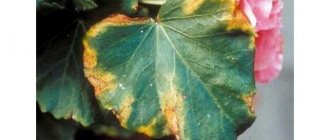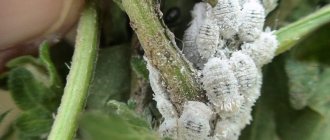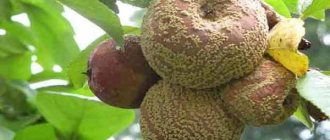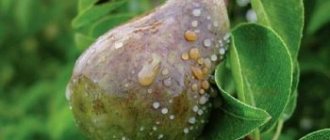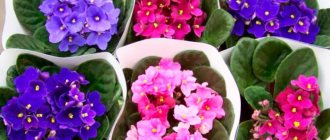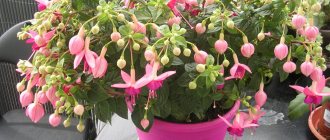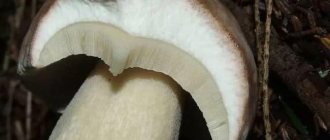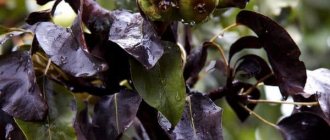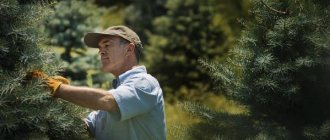- Why do Crassula's leaves turn pale and fall off?
- The stem of the Crassula is stretching out.
- Crassula does not grow.
- The leaves of Crassula have lost their elasticity. Why do Crassula leaves wither?
- The roots of the Crassula rot - the trunk softens and the leaves wrinkle.
- Crassula has black spots. What is this?
- Bacterial or fungal infection of Crassula? How to distinguish?
- Fungal infection of Crasula and how to treat it?
- Bacterial infection of Crasula and how to treat it?
- Crassula's leaves have turned red.
- A white (silver) coating appeared on the leaves of Crassula.
- Mealybug.
- Spider mite.
- Shield.
Crassula or Money tree is one of the most popular representatives of succulents.
Belongs to the Tolstyankov family and is considered an unpretentious houseplant to care for. However, sometimes problems arise from improper care. How can you tell if Fatty is sick? What signs can be used to determine her illness? We will look at the answers to these questions in our article. After all, the sooner you start “treatment”, the higher the likelihood of saving your rash. Crassula is unpretentious in care.
Caring for the Crassula will not cause you any particular difficulties, but some points are still worth taking into account.
Money tree loves bright, diffused light ; under no circumstances should direct sunlight be allowed to fall on the leaves of the plant. A southeast window would be an ideal place to place it. You will please your Crassula if you ventilate the room in which it is located from time to time - Crassula does not tolerate stagnant air. That is why Crassula can be placed on the balcony in the summer. It tolerates dry hot air painfully, so when choosing a place for your growler, make sure that it is not located next to a hot radiator.
Crassula does not need to be watered often - 1-2 times a week in the summer, and 1 time every 2 weeks in the winter. Be sure to ensure that the earthen ball in the pot dries out, otherwise the plant will begin to rot and die. For Crassula, drought is better than overwatering .
The fat woman also needs feeding. In the summer, it is necessary to feed Crassula 2 times a month; in winter, reduce the amount of feeding and its frequency to once a month. Fertilizers for Crassula are suitable for succulents and cacti, only at a much reduced dosage.
Important! Before applying fertilizing, the plant must be watered. Fertilizer is always applied to moist soil.
Crassula does not like replanting, so this should be done only as needed, when the pot becomes small for the root system. It is better to do the transplant using the transshipment method. The soil for replanting Crassula is suitable as standard for cacti and succulents with the addition of sand and perlite in a ratio of 2:1:1. When transplanting Crassula, do not forget to use drainage.
As a result of improper care, Crassula may develop ailments, which should be immediately addressed in order to promptly eliminate them.
Why do Crassula's leaves turn pale and fall off?
The fat woman has dropped its leaves.
to answer the question why Crassula loses its leaves . There are several possible options. As a rule, this occurs either from underwatering or from overwatering, it is also possible that your plant is experiencing stress and thus reacts to it. With the first two cases, everything is clear: if you water your pet too rarely, then it’s a drought, but if you have constantly wet soil and it doesn’t dry out, then you’ve flooded the plant.
The solution to the problem is to adjust watering and reduce fertilizing.
But what causes a plant to experience stress is not entirely clear. The most likely cause is watering with cold water . Do not forget that Crassula is still a tropical plant and a cold shower is not at all for it.
The solution to the problem is to water the Crassula with settled water at room temperature, or preferably warm.
Small recommendations
If you notice on the leaves, in addition to white dots, also a silvery coating, then do not worry, this indicates that the Crassula has experienced a little stress.
She just needs time to recover. Try not to disturb it for now, without changing its place or transplanting it into another pot.
Although white spots are just a sign of excess moisture, try not to let it happen too often.
After all, in such an environment, pathogenic bacteria and fungi, which oh, how they love dampness, can very easily multiply. And especially if your plant is still weak and fragile.
Source:Go
The stem of the Crassula is stretching out.
The fat woman pulls out from insufficient lighting.
The stem of Crassula stretches in response to a lack of light; the plant tries with all its might to reach the light source, so it stretches upward. Most likely, you have chosen a not very good place for your pet.
The solution to the problem is to move the Money Tree to a more illuminated windowsill (make sure that direct sunlight does not fall on it) or organize additional lighting for the plant.
Insects that attack the money tree
In addition to diseases, the fat plant can be affected by insect pests.
Brown spots on Crassula leaves
If the leaves of a tree have changed color, this may indicate the presence of fungal diseases. Most often they are covered with brown spots, but there are brown and white spots.
The main cause is scale insects. To save the plant, you need to take action as early as possible.
Insect control consists of:
- Mechanical processing. To do this, use a brush, which is pre-moistened in kerosene, insecticide or alcohol.
- Wipe the leaves with soapy water. Prepare a liquid based on laundry soap. After treatment, the tree is washed under a warm shower.
- Treatment with insecticides. The product should be prepared only according to the instructions indicated on the package.
Any of the methods should be used once a week until the insects are completely eliminated. If you stop the procedure ahead of time, the scale insect may appear again.
Scale insects quickly weaken the plant. Therefore, to prevent it from dying, it is necessary to take action in time.
Spider mite
This is an insect that is small in size. Despite these parameters, it is not difficult to see a tick. It looks like a small dot of gray or reddish color. Another sign of the insect is the web that envelops the leaves of the Crassula. If you do nothing, the leaves will soon begin to turn yellow and brown.
You can get rid of spider mites using medications that are available in any specialty store. After spraying, the tree should be covered with polyethylene and tied up. Due to the high humidity under the bag, the tick will die much faster.
Tree sheds leaves
Crassula is a tree that sheds its leaves once every two years. If this process occurs more often, then special attention should be paid to the condition of the soil.
Lead to frequent and abundant “leaf fall”:
- maybe watering with cold water;
- less often the cause is lack of moisture;
- long exposure of the tree to direct sunlight.
In this case, the leaves become yellow, limp and slightly lose their thickness.
If you determine the cause of the disease in time, you can quickly get rid of the problem. Only in this way will the fat woman always be beautiful, healthy and become a real decoration of your room.
Money tree treatment - video
Crassula does not grow.
The fat woman can remain small if she does not have enough nutrients to grow.
Sometimes the absence of visible signs of growth is associated with the plant's dormant period, for example, in the winter in a cool room. However, there are also other reasons - lack of lighting or nutrients, as well as poor watering.
If your Crassula stands far from daylight, this is most likely the reason for the lack of growth.
The solution to the problem is very same as in the previous case - changing the location or additional lighting.
If the Money Tree stands in a well-lit place, but still does not grow, think about how often you water it, perhaps you forgot about it and the plant did not receive moisture for the second month. How long have you been fertilizing the soil?
The solution to the problem is to water the plant and then apply fertilizer (use a dosage 2 times less than indicated on the package).
Treatment of Crassula
In almost all cases of malaise, the plant can be saved. It is important not to let the situation get worse and take the necessary measures on time.
The plant turns yellow and drops its leaves
One of the most common problems faced by a gardener growing crassula is leaf loss. There may be several reasons for this. The main one is improper watering.
Irrigation with cold water can destroy the plant. Problems can arise due to differences between air and soil temperatures. Dampness in cold conditions provokes not only the falling of leaves, but also the appearance of mold and the proliferation of fungi, so you need to water the plants with warm, settled water, always taking into account the temperature of the environment.
Improper watering of the plant can lead to loss of foliage
The stem stretches out
When there is not enough light, the plant suffers from a lack of nutrition, because it receives it not only through the soil, assimilated by the roots, but also through the leaves, through photosynthesis. As a result, when there is little lighting, and the fat plant receives watering in the normal amount, the body’s growth accelerates, but the plant does not have time to develop and stretches with all its might upward, towards the light source. Therefore, to form a beautiful bush, you need to place the plant in a well-lit place. But we must not forget that shading from direct sunlight is required.
Lack of light with abundant watering will unsightly stretch the trunk of the Crassula
Crassula grows slowly
This problem does not have a clear solution. If the development of the fat plant is too slow, you need to think about the correct mode of watering, lighting and fertilizing. During the dormant period, the plant must be provided with proper conditions.
The trunk rots, the leaves become soft or wrinkled
These symptoms are caused by too much water in the soil. The first step is to dry the soil well. You may have to transplant the fat plant into new soil. However, you need to be prepared for the fact that the plant will not be able to recover. Then the solution would be to propagate Crassula using healthy cuttings.
Crassula leaves wrinkle due to heavy flooding after drought
If the fat woman has been sitting on a lighted window for a long time without watering, then you should not immediately rush to water it. The fact is that the roots of the plant, without moisture, shriveled and dried out, and after newly received water they will begin to straighten out. If you give them more moisture than they can absorb in this state, the roots will crack and may rot in a new environment that is too damp. It is not surprising that the leaves of a flooded flower become wrinkled after suffering from drought.
Black spots appear on the leaves
Gardeners often confuse bacterial spot with sunburn. It is easy to distinguish these spots if you understand the nature of their occurrence. The burn always occurs locally, that is, in the place where the beam was directed, and does not spread in any way after the sun exposure disappears. Dark spots resulting from a bacterial infection gradually invade the leaf blade.
For treatment against bacteria and fungi, it is very effective to use the drug Fitosporin-M. One part of the substance is thoroughly dissolved in two parts of water, and then the resulting mixture is diluted again with water 10 times and the fat plant is treated with this solution on the foliage.
The plant is lethargic, its parts are drying out
A wilting plant may indicate that the roots are already cramped in the pot. This means it's time to replant the Crassula. It is better to do this in the spring. Of course, if the plant is sick and is in danger of dying, then you cannot wait. In addition, a drying plant signals an incorrect watering regime - excessive or insufficient.
The leaves are turning red
A change in leaf color from green to reddish is a reason to shade the fat plant from the sun's rays. The foliage also acquires this shade when there is a lack of fresh air (then the room needs to be ventilated daily) and a deficiency of nutrients.
Excess light and lack of fresh air leads to reddening of the leaves.
The roots darken and rot
If the malaise of the fat plant is detected and it is caused by rotting of the roots, then saving it, when the trunk of the money tree has not yet had time to blacken and rot, can only be done by replanting after treating the root system. To do this, you need to remove the plant from the pot, thoroughly rinse the roots under warm running water, and then, after carefully examining the shoots, remove the damaged areas. After the plant has only healthy roots left, dip them in a light crimson solution of potassium permanganate for 15–20 minutes to disinfect.
To avoid the development of bacterial infection and fungus, which could also cause the root system to become diseased, it is recommended to plant Crassula only in treated and disinfected soil and pot. To do this, the earth is calcined in the oven for an hour at 200°C, and the pot is doused with boiling water, steam, or rinsed with a steep manganese solution or a 20% bleach solution.
White dots or silvery coating appeared on the leaves
Light dots indicate that the plant is oversaturated with water. In this case, it is necessary to dry the soil by reducing watering. A silvery coating is a sign that the plant has experienced stress and is now recovering. There is no need to take any measures other than proper care.
A silvery coating on Crassula leaves indicates recovery from stress.
The leaves of Crassula have lost their elasticity. Why do Crassula leaves wither?
The fat woman is withering.
Crassula also withers for various reasons. Firstly, it may be simple cramped conditions in the pot , when the roots have already taken up maximum space in the container; in this case, the problem can be solved by transplanting into a more spacious pot.
Secondly, the reason that the Money Tree withers may be improperly adjusted watering . In case of flooding , the roots of the plant crack and begin to rot, and the trunk begins to rot along with them, causing the leaves to wither and wrinkle. Unfortunately, simply reducing watering will not solve the problem . It is necessary to remove the plant from the pot and inspect its root system. If the earthen ball around the roots is wet and the roots are rotten, then they will have to be removed. You need to use new soil for Crassula, and in future do not water it so much. Unfortunately, transplanting Crassula is not a guarantee that she will survive . If, after time, she does not get better, we advise you to break off the cutting and root it. Don't worry, succulents are very easy to propagate.
How to revive a frozen plant
It happens that the fat woman is forgotten near an open window in winter and it freezes very much. After this, it sheds its leaves, its frostbitten branches turn black and fall off in parts. It seems that the plant is dying. But don't throw it away. Most often, the fat woman can still be saved.
To revive a money tree at home, you need to trim off all cold-damaged parts. They are trimmed down to healthy tissue.
If all the branches are completely damaged, only the trunk remains alive - no problem. New shoots will also grow from the trunk, although the restoration of the Crassula will take much longer.
The roots of the plant may also be frozen. Therefore, the plant is removed from the pot and the root system is examined. All dead parts also need to be cut off; they cannot be saved, and the dead tissue will become a site for the development of a fungal infection.
The sections are treated with activated carbon. After this, the fat plant is planted in new soil. Watering is carried out very carefully until the fat plant begins to grow. The growing plant is watered as usual.
The roots of the Crassula rot - the trunk softens and the leaves wrinkle.
The roots of the Crassula have darkened and rotted.
If, when replanting your wilting plant, you see that the roots of the Crassula have darkened and begun to rot , but you need to take a number of resuscitation measures, otherwise the plant will die very quickly.
So, first, rinse the Crassula roots under running warm water. Secondly, remove the damaged areas of the roots. Thirdly, prepare a weak solution of potassium permanganate and place the Crassula with the remaining roots in it for 15-20 minutes. This is necessary in order to disinfect healthy roots.
Important! Under no circumstances should you plant an already treated plant in the same soil and pot, otherwise your efforts will go down the drain. The container in which the Crassula was sitting, and even more so the soil, are contaminated. The ideal option would be to wash the pot using laundry soap. Pour boiling water over the washed pot. And use new soil.
Crassula has black spots. What is this?
Blackening of Crassula leaves.
In the case of blackening of Crassula leaves, there are 2 options that must be distinguished. It could be a simple sunburn or a completely unusual infection that will destroy your plant in a matter of days or weeks. How to distinguish a burn from an infection? Carefully inspect the affected areas. A burn is always a local phenomenon , and will appear only in the place where the sun's rays directly hit . Solve the problem by simply changing the location of your plant.
If you find blackheads in hard-to-reach places where the sun could not reach in principle, but you are dealing with a bacterial infection.
Basic succulent diseases and home therapy
DIY money tree bonsai
Unfortunately, Crassula, like many other plants, can be subject to various pathologies. Many diseases of the money tree occur due to non-compliance with flower care rules. Therefore, questions often arise about why the fat plant has soft leaves and what to do to prevent them from falling off.
Silvery patina
A silvery coating on green leaves occurs as a response to stress. Often the cause is non-compliance with the watering regime and a sharp change in temperature downward. The symptom may also appear when lighting conditions change.
There is only one treatment in such a situation - wait until the plant recovers on its own. Plaque is dead cells that appear on the surface of the leaves after a stressful situation. Gradually it will disappear on its own.
Gray plaque
Green bumps
The appearance of green pimples on the leaves is possible for 2 reasons - excess moisture and damage by scale insects. To determine accurately, it is recommended to carefully examine the plant. If damaged by a pest, appropriate treatment is started (this will be discussed below).
If the reason is frequent watering and stagnation of moisture, then it is necessary to adjust the watering - it should not be more than 2 times a week.
Attention! At ambient temperatures below 23 degrees, one weekly irrigation is sufficient.
Red or purple color
Sometimes the leaves of the fat plant turn red or acquire a purple tint. This happens for several reasons:
- constant contact with direct sunlight;
- lack of fresh air;
- lack or excess of nutrients in the soil.
It is possible to get rid of redness if you choose a different location for the succulent and ventilate the room more often. Fertilizing is carried out with special fertilizers for succulents, preparations are prepared according to the instructions for use. With proper care, the plant cannot turn red.
Leaves wither and turn yellow
Sometimes you may notice that the leaves of the crassula become flaccid and acquire a yellow tint, become wrinkled and fall off. This happens more often because the plant is hot.
During the summer months, the plant will be more comfortable outdoors than indoors. It is important to ensure that there are no drafts or exposure to direct sunlight.
Presence of burns on leaves
The tree is losing its leaves
Falling of leaves on Crassula is observed quite often. In advanced cases, only a few pieces may remain on the stem. The reasons for this phenomenon are:
- natural state - old and lower leaves begin to fall over time;
- excess moisture in the soil - then the leaves may wrinkle and dry out;
- use for cold water irrigation;
- lack of moisture - all life processes slow down.
Normally, the Crassula intensively sheds its leaves in winter. This is necessary to renew the plant. In such a case, there is no need to carry out any actions; the young leaves will grow on their own after some time.
If the cause of the fall is a disrupted irrigation regime, then it is recommended to monitor this process and normalize it.
Brown or brown spots
The appearance of brown or brown spots on the plant, which then turn black, indicates that the plant has been exposed to fungal diseases. This happens as a result of severe waterlogging or too cold temperatures.
Important! To get rid of the disease, treatment with special antifungal fungicides will be required.
The medicinal solution is prepared according to the instructions and the plant is treated. If necessary, the procedure is repeated. Diseased and wrinkled leaves need to be removed.
Often this sign indicates a scale insect infection, which can also be eliminated using specific means.
Root or stem rotting
Rotting of the stem and roots occurs with constant moisture and low air temperatures. In general, the fat plant does not need frequent irrigation. The plant accumulates moisture in its leaves. Therefore, frequent watering often leads to rotting and the plant dies.
In this case, there is wilting of the foliage and an unpleasant smell of rot from the soil, which can be easily felt by the owner of the plant.
The only way to cope with the problem is by replanting the flower in another soil and pot.
Attention! Rotten roots are removed, and the cut areas are treated with activated carbon.
Stunted growth
Often, a fat plant planted a long time ago simply stops growing and freezes in one place. There are several reasons for this condition:
- unsuitable small pot;
- no transplant for a long time;
- damage by harmful insects;
- lack of nutrients.
Actions are carried out after the exact reason for the lack of growth in the plant is determined. First of all, it is recommended to transplant the fat plant into a larger pot. During the process, the plant is carefully inspected for rotting and pest damage. If necessary, treat with fungicidal preparations or insecticides.
Soft and thin leaves
Often the leaves of the fat plant become thinner and become soft. The reasons are excess moisture, insufficient lighting or unsuitable air temperature.
What to do if the leaves of the money tree become soft and limp? First of all, try to determine the cause of this phenomenon. If there is excess moisture, it is recommended to replant the plant and treat it with special preparations. The pot is moved to a bright place, protecting it from direct rays of the sun.
White dots
The appearance of white spots on the foliage indicates excessive moisture and watering. Being in a room with high humidity also leads to a similar problem. Thus, the flower gets rid of excess water through the pores in the foliage.
To eliminate the problem, it is recommended to reduce the amount of watering and spraying, and move the plant to a drier room. It is imperative to subsequently control the irrigation process.
Leaf burn
The appearance of yellow or brown spots on the foliage indicates possible burns. They arise as a result of the flower being in direct sunlight. The problem may appear due to the fault of the owner, who provokes moisture to enter the leaves exposed to the sun.
The affected leaves are removed, and the plant itself is moved to another place with diffused light or shaded.
Small leaves
Crassula loves diffused light. With its deficiency and lack of nutrients, the leaves on the plant become small. You can cope with the problem by moving the plant to a more suitable place or feeding it with special fertilizers for succulents.
Important! In most cases, crassula diseases arise as a result of violation of the rules of care.
The plant does not like direct sun and frequent heavy watering.
Leaf diseases
Bacterial or fungal infection of Crassula? How to distinguish?
Why does Crassula get sick and how to prevent it? Plants with weak immunity are most often susceptible to such infections in winter, since the ideal environment for the development of infection is dampness and cold. That is, with excessive watering, the earthen lump in the pot does not have time to dry out.
You must understand that distinguishing one type of infection from another at home is very problematic , but we will try to determine our further actions.
Both fungal and bacterial infections manifest themselves with similar symptoms - brown spots appear on Crassula , which grow and invade new areas of the plant. And in a fairly short period of time the plant dies completely. Our behavior should be as follows - first of all, it is necessary to apply treatment for a fungal infection, and if it is ineffective, proceed to treatment for a bacterial infection.
How to save a fat woman at home
If problems arise with the fat plant, it is necessary to determine their cause and immediately carry out work to save the plant. The fat woman is very unpretentious, so don’t throw it away. At home, a fat woman can almost always be saved and its beautiful appearance restored. If the money tree dies, you need to do the following:
- Replant into new soil;
- Adjust plant care;
- Treat infectious diseases with appropriate medications;
- Get rid of pests.
Transplanting a plant
If the roots of the money tree have rotted due to stagnation of water or abundant and frequent watering, then it can be saved by replanting it in new soil. This is an opportunity to save the plant from serious infections.
If problems arise with the growth and development of the fat plant, transplantation should not be postponed until spring. This procedure must be carried out immediately, since the disease progresses quickly and the fat woman soon dies. In case of an emergency transplant, the plant is removed from the pot and the old soil is removed from the roots. After this, the root system is examined.
It is necessary to remove all rotten and dead roots, as well as their blackened areas.
All sections are treated with crushed activated carbon, the plant is dried for 2-3 hours before planting. The fat plant is planted in a new pot with fresh soil. Drainage at the bottom of the pot is required. After planting, the plant is not watered for 2-3 days and placed in partial shade for 1-2 weeks.
Irrigation correction
Crassula is a succulent. It is adapted to absorb a lot of water during rain, and then use this water sparingly during a long dry period. Watering this plant at home should not differ much from natural conditions.
In summer, the plant is watered abundantly, but rarely. Between waterings, the earthen ball should dry out almost completely.
Only with this regime will the plant’s roots function normally. The main mistake in keeping Crassula is abundant and frequent watering. It very soon leads to rotting of the roots, from which it is very difficult to save the plant; it dies.
In winter, watering the plants is reduced. The tree needs a cool and dry winter.
But you shouldn’t let the soil in the pot dry out for too long. In winter, water in small portions, since at low temperatures the soil dries out slowly and there is a risk of waterlogging. Watering is carried out with warm, settled water.
Lighting is important for the Crassula. It needs bright, diffused light all year round. Direct sun can leave burns on the leaves, and lack of lighting leads to stretching and weakening of the tree shoots.
Treatment of money tree diseases
To treat crassula diseases at home, store-bought medications are used. You cannot use traditional methods of treatment, since the effect of this is extremely low, and it is impossible to save the plant with their help.
Bacterial infections of Crassula are most often untreatable.
In the early stages of the disease, you should try to save the plant by treating it repeatedly with an interval of 7-10 days with antimicrobial agents (Trichopolum, copper sulfate). Before treatment, all affected areas of the plant are removed.
To combat fungal infections, fungicides are used - antifungal drugs.
If leaves and shoots are damaged, the above-ground part of the plant is treated. To combat root rot in the early stages, watering with a fungicide solution under the root has a good effect. Diseased leaves and stems must be cut off and destroyed; they cannot be saved. Common fungicides for indoor plants: Trichodermin, Fitosporin, Fundazol.
Pest Control
Crassula pests can be divided into harmful insects and harmful arachnids (mites). Store-bought pesticides will help fight them. You should not fight using folk methods.
These methods do not make it possible to completely destroy pests. They will remain on the plant and will continuously destroy it. At the same time, it is in a depressed state and soon dies.
To destroy harmful insects, insecticide preparations (Aktara, Arrivo) are used. They are used to treat the above-ground parts of plants to destroy adult insects and their larvae.
The treatment should be repeated after 7-10 days, when new larvae emerge from the laid eggs.
When destroying scale insects, it is necessary to collect adult insects manually, since they are insensitive to drugs under the shell. Acaricides are used against ticks: Demitan, Neoron. These are narrowly targeted drugs.
Plants are treated with them at least 2 times with an interval of 10 days until the pests are completely destroyed.
The widest group of pest control products are insectoacaricides. These are complex drugs that act on insects and arachnids (Akarin, Actellik). They are easiest to use to save the plant from any types of pests.
Fungal infection of Crasula and how to treat it?
Leaf fungus infection.
You need to follow simple recommendations - reduce watering or eliminate it completely. Ventilate the room more often. And the most important thing is to transplant the Crassula.
The transplant must be carried out according to the following rules:
- rinse the roots under warm water
- remove old and rotten roots
- soak the plant in a solution of potassium permanganate for up to 20 minutes.
- disinfect the pot by washing it with a soapy solution using laundry soap, and dousing it with hot water.
- prepare new soil and transplant Crassula there.
Sometimes, the plant is damaged by more than half, and it is not possible to save it; in this case, it is better to remove the still healthy cuttings and root them. Crassula reproduces like other succulents - by rooting cuttings or leaves.
You might be interested in:
Potassium permanganate solution for indoor plants. Propagation of succulents.
What to do if the money tree has soft leaves?
Typically, a plant experiences a similar disease if it is watered too often.
Inexperienced gardeners believe that Crassula needs water immediately after the soil dries. However, in warm weather it requires watering once a week, and in winter - only once a month. If the leaves become soft, the flower can be revived. The young fat plant is taken out of the pot, the roots are carefully cleaned with a knife, placed in a glass of water, and only then transplanted into new soil. It is not recommended to remove an adult tree from the pot. It is enough to remove the wet substrate, replacing it with dry soil. Watering stops completely.
The problem is also observed in the presence of pests. In this case, special preparations and treating the foliage with a sponge and soap will help.
Bacterial infection of Crasula and how to treat it?
Bacterial rot on Crassula appears as brown spots, similar to a fungal infection.
A bacterial infection is more difficult to treat than a fungal infection using potent drugs. Treatment of bacterial rot is carried out with fungicides (10 g of medicine per 10 liters of water) . treatment with antibiotics, in particular penicillin, is necessary . The most effective treatment is injection, however, Crassula can also be treated using leaf treatment.
This is interesting! The fat woman is absolutely resistant to antibiotics, and even a high dose of the drug will not harm her!
Crassula's leaves have turned red.
The redness of the leaves in Crassula is associated with the active sun.
If your Crassula's leaves have turned red , then we can definitely talk about its exposure to active sun. The consequences of direct sunlight on the Crassula can be even more tragic, in the form of brown sunburn. The problem can be solved by shading your plant from the sun's rays.
Important! There is no need to pick off reddened leaves!
How many years does a money tree live, what can harm it?
If you properly care for the tree, it can live for about 50 years. But this is very rare. The standard lifespan of crassula is 20-30 years.
Improper care, lack of fertilizers, money tree diseases and pests - all this affects the development and lifespan of the plant.
Healthy money tree
A white (silver) coating appeared on the leaves of Crassula.
The coating on the leaves of Crassula can be white or silver.
If you find a white or silvery coating on the leaves of Crassula , inspect your plant carefully. If no additional symptoms are found, perhaps this is due to the stress your Crassula has experienced and thus she is simply recovering . In this case, she does not need your intervention!
White dots on Crassula leaves.
If you find other symptoms on your plant, for example: mealy discharge in the axils of the leaves or roots, then most likely it is a pest that has settled on your plant - mealybug .
The Money Tree is not believed to be susceptible to insect pests. This is not entirely true. A plant with a weakened immune system can still suffer from various pests. And then you need to know how to save him.
Diseases are the cause of the appearance of white plaque
All types of Crassula have good immunity and are perfectly adapted to growing at home. Physiological diseases are associated mainly with improper agricultural practices, especially excessive watering.
Normal waterlogging of the soil will not cause the vegetative organs to become covered with white spots or plaque. They are more likely to darken or turn yellow, and with prolonged drought they will wrinkle and dry out.
A clearly visible white coating appears on the leaves or trunk due to infectious diseases. If a pot of Crassula is taken outside in the summer, one should not be surprised, but pathogens enter the apartment:
- when contaminated garden soil is taken for planting;
- when using a dirty tool to care for the fatty;
- from the fur of pets walking on the street;
- on the unwashed hands of owners who worked in the garden or vegetable garden and decided to “communicate” with a houseplant.
Powdery mildew
An infectious disease caused by Erysiphales fungi. External signs - the leaves are covered with an uneven white coating, similar to flour. It clogs the stomata, interferes with photosynthesis, and if the owners do nothing, the fat woman may die. Easy to diagnose.
The occurrence and development of infection is facilitated by:
- dry soil with high air humidity;
- temperature changes;
- crowding of plants;
- lack of ventilation.
In the initial stages, white plaque can be washed off with green or laundry soap. Treating an advanced disease is a little more difficult - you will have to treat it with chemicals.
It is not recommended to use copper-containing preparations for treatment at home. It is better to spray the fat plant with a solution of Fundazol - it is almost safe for humans and helps get rid of downy and powdery mildew.
Fusarium
The Fusarium mushroom is much more dangerous than the previous one; it affects the vascular system. It can appear on Crassula from garden soil, or when the pathogen gets into the wound. The latter is caused by contaminated tools or unwashed hands.
If the infection has entered the Crassula through the soil, the root is the first to suffer and rot. The flower begins to fade. When the disease enters its final stage, the base of the trunk is covered with a ring of white or pinkish mold.
When injured vegetative organs of the Crassula are infected, plaque may first appear on the trunk or leaves. Provoking factors:
- temperature above 20 but below 34° C;
- high humidity;
- acidic soil;
- injuries of vegetative organs;
- the room is not ventilated;
- unsanitary conditions;
- substrate is too dense;
- temperature changes.
The fight against fusarium on Crassula is possible only in the initial stage. The flower is treated with a systemic fungicide, for example, Fundazol, the solution is prepared and the frequency is according to the instructions. Then they are sprayed twice with biological products - Trichodermin or Fitosporin.
If the disease has progressed far, it is easier to throw away the fat plant along with the pot and soil than to treat it. When mold has appeared, it is better not to even take cuttings for rooting - the fungus attacks the vascular system and quickly spreads to all parts of the plant.
Mealybug.
Mealybugs often settle in the axils of leaves and roots.
If you find such a guest on your Crassula, then rinse the plant under running water; unexpected guests are easily washed off. Then treat the leaves, as well as the axils and, if possible, the entire plant with alcohol or garlic solution.
Important! When processing, it is very convenient to use a cotton swab, moistening it in the solution.
Mealybug on Crassula.
You can also resort to ready-made pest control products - Fufanon or Actellik.
Pests
In addition to Crassula diseases, pests also have a negative impact, photos of which will be presented below. These include spider mites, scale insects, mealybugs and rootbugs. The method of combating each type of insect is different and therefore requires separate consideration.
Shchitovka
This pest is quite large in size, so it is clearly visible to the naked eye. Females remain motionless, they are attached to a stem or leaf, covering their body with some kind of shield. The scale insect has a light brown or brown color.
The first step in the fight against the pest is its manual removal from the surface of the fat plant. Next, treatment is carried out with a soap solution or a commercial preparation called Fitoverm. To consolidate the result, spraying is repeated after a few weeks.
Spider mite
Unlike scale insects, Crassula is practically invisible on the surface. The appearance of a tick is determined only by the corresponding sign - a silvery coating on the money tree, which is actually a very thin cobweb covering its habitat. The pest itself looks like a gray or red dot continuously moving around the plant.
Along with the cobweb, a change in the appearance of the leaf plate occurs. It becomes covered with brown spots, turns yellow and falls off over time. A simple method of eliminating the mite is to spray the crassula and then wrap the pot in a plastic bag. This will sharply raise the humidity level, and in such conditions the pest does not live long.
Soap solution or preparations Apollo, Actellik, Fitoverm are also effective in removing insects.
Mealybug
The insect quite often attacks Crassula. Its habitat is the axils of the leaves, in which the juice is sucked and plant tissue is eaten. As a result, the immunity of the fat plant weakens, accompanied by the fall of leaves. Externally, the pest’s activity manifests itself as a powdery discharge resembling cotton wool.
You can remove the insect with a stream of water. The affected areas are wiped with a cotton swab dipped in garlic infusion or alcohol solution. In advanced cases, the drugs mentioned above are used.
Root mealybug
Some manifestations of money tree diseases are caused by root worms, which are very difficult to detect. It will be possible to identify the cause of the deterioration of the flower only during the process of replanting - growths and movement of insects with a white body will be noticeable on the roots.
The pest is removed under running water at a temperature of 50 degrees. After this, the roots are treated twice in a Fufanon or Actellik solution with an interval of 7 days.
Spider mite.
Spider mite on Crassula.
This parasite is very easy to identify - by the characteristic cobweb on the plant. You can also see it by looking closely at the plant - you should see a gray or red dot that moves along the leaf.
Spider mites are very afraid of high humidity. You can fight it using the folk method:
- Give your plant a warm shower.
- prepare a soap solution using laundry soap.
- foam the solution and apply the foam to the leaves and trunk.
- wash off the foam
- Place the plant under a hood or plastic bag to maintain high humidity.
- It is better to repeat the procedure again after a week.
Important! The treatment can be carried out with a ready-made preparation - Apollo.
Shield.
Scale insects are very noticeable on the plant.
It is very difficult not to notice the scale insect on Crassula, it looks like such a tubercle as in the photo above. It is better to remove insects from the plant manually and destroy them, treat the plant with a soap solution and use a chemical against scale insects - Fitoverm. The instructions describe detailed instructions for action.
If you haven’t found the answer to your question, ask it in the comments and we’ll try to help you.
Health to your plants!
